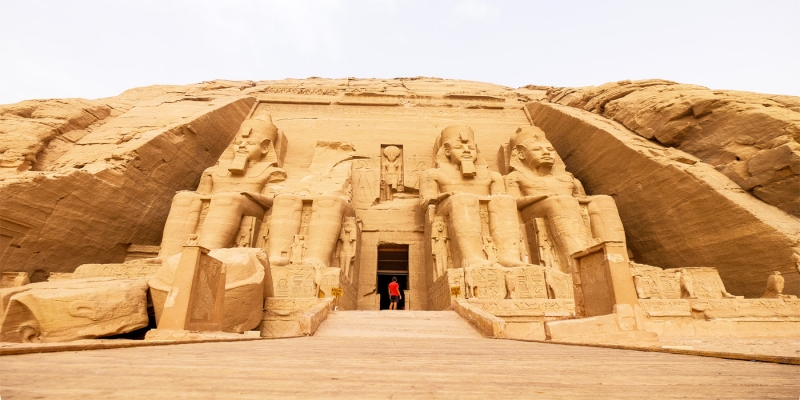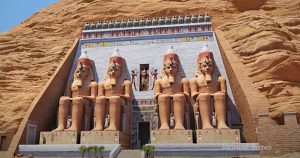What Abu Simbel Appeared Like Originally

Behold the Great Temple of Abu Simbel, a stunning reflection of Ramesses II’s architectural brilliance. Carved into the Nubian rock, this temple stands as an extraordinary example of ancient Egyptian ingenuity. Unlike conventional structures, it adapts to the regional style, with colossal statues of Ramesses II guarding the entrance, reaching over 20 meters in height. As you explore, the interior reveals a departure from the norm, with processional spaces interiorized, and the pylon intricately carved into the living rock.

Vivid reliefs in the vestibule depict Ramesses’ military exploits, while the hypostyle hall, adorned with anthropomorphic columns, draws you deeper into the temple’s depths. Ramesses, seated among divinities, adds a touch of mystique, heightened by the unique solar alignment that bathes specific portraits in sunlight twice a year. The temple’s relocation in the 1960s, necessitated by the threat of submersion from the Aswan Dam, attests to the collaborative effort to preserve this ancient wonder. Today, Abu Simbel stands as a testament to the enduring marvels of ancient craftsmanship and the resilience in the face of modern challenges.
